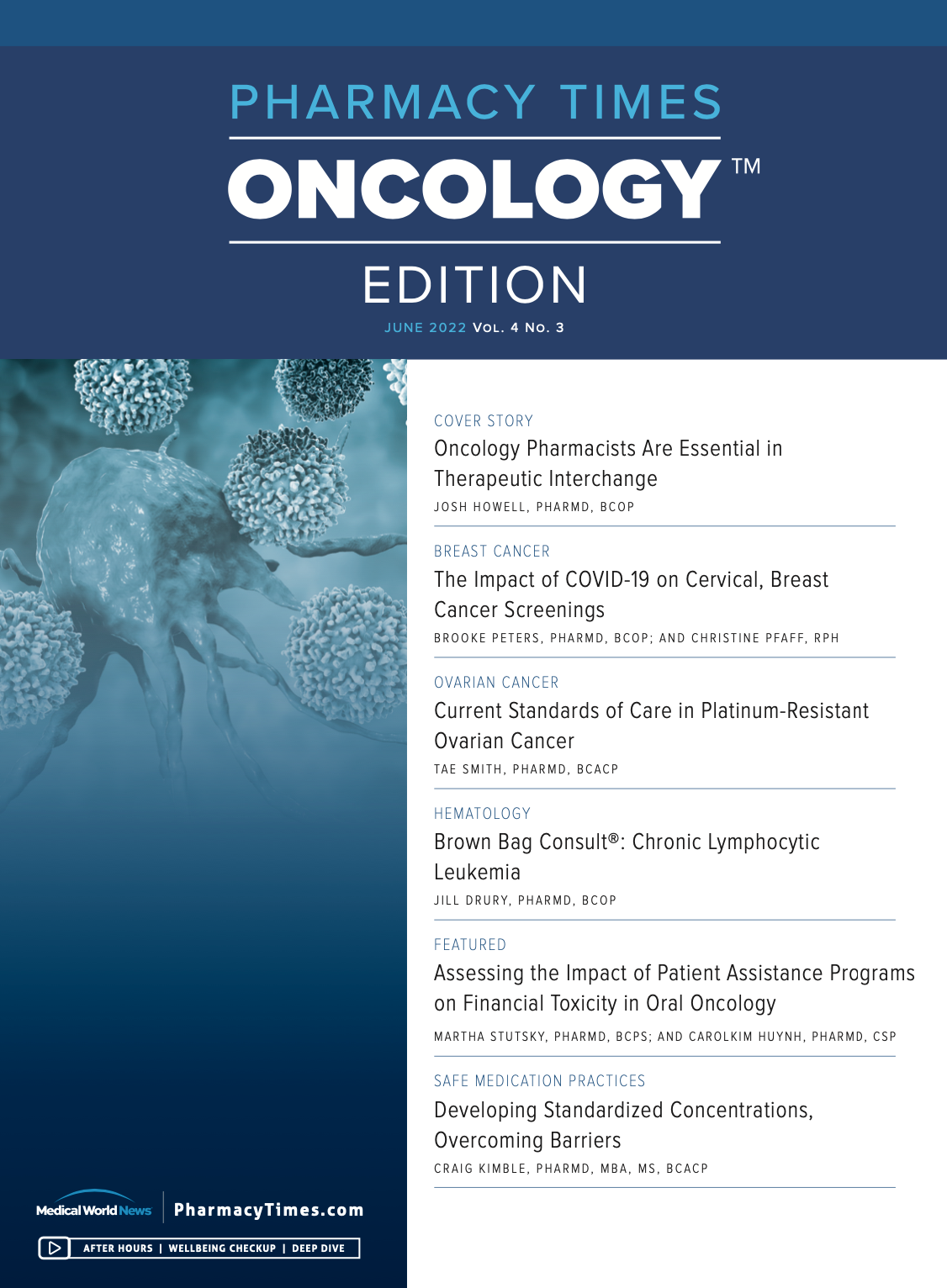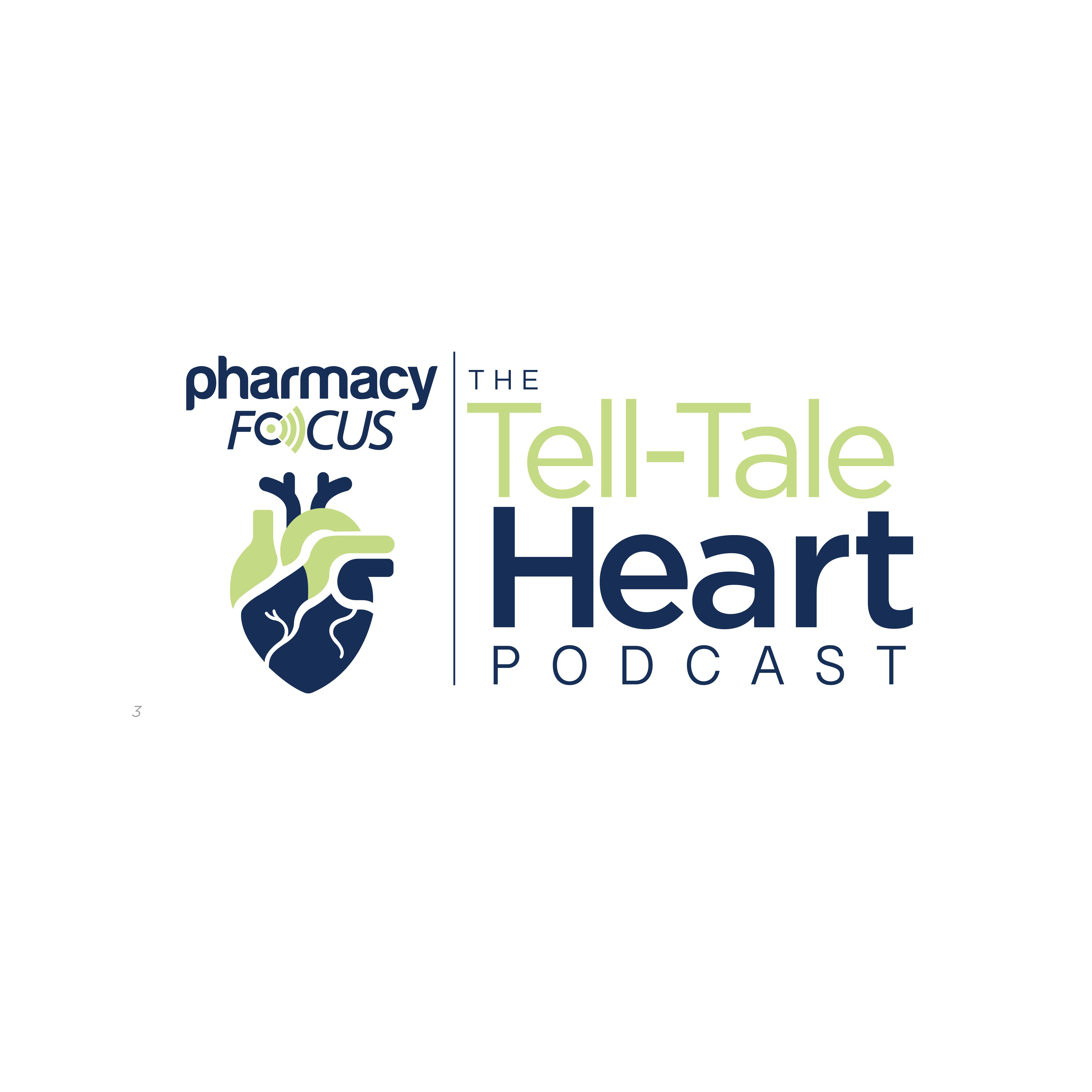
Publication
Article
Pharmacy Practice in Focus: Oncology
Navigating Patient Treatment in Oncology to Fill Gaps in Care
Author(s):
Oncology pharmacists can help ensure patient access to lifesaving therapies.
Today, the positive impact of oncology product approvals has evolved to the point where, in many cases, there are multiple treatment options to choose from when targeting a specific disease state. However, this opportunity for drug selection has opened the door for payers to leverage one drug over another in terms of coverage offerings, creating new challenges for care teams and patients during the treatment process.
Furthermore, the oncology products patients receive may vary from what was ordered by the oncology professional due to not only the broader treatment options available but also the higher costs of treatments and subsequent payer coverage decisions. However, the oncology pharmacy team often has their own reimbursement specialist with the experience, background, and relationships necessary to ensure what was originally ordered remains in the patient’s treatment plan.
Because of this changing dynamic in product selection and access, the role of oncology pharmacists as key patient therapy advocates has strengthened, as oncology pharmacists work on the patient’s care team to ensure patients have access to lifesaving therapies that meet their clinical needs.
The Navigator
Receiving a cancer diagnosis is a lifealtering experience for the patient and their family, with therapy selection as just one of many factors to consider on the road ahead. Under the best of circumstances, the health care system can be daunting to traverse for patients, but following a cancer diagnosis, it can become significantly more challenging.
However, there are newer and more efficacious therapies available that have evolved and emerged over the past several years. Yet, patients faced with the bewildering task of navigating the health care system alone in order to receive these emerging treatments may come up short in terms of reaching the best possible outcome available for the treatment of their disease.
A patient with a new diagnosis will benefit greatly from the support of a care team that includes the medication expertise of oncology pharmacists to help them navigate the complexity of the treatment landscape that lies ahead. With support from an oncology pharmacist, the oncology team can help alleviate a host of anxieties for patients who are starting and then adhering to a complex oncology treatment plan.
When a patient receives a diagnosis, the clinical oncology pharmacist can immediately support the care team by helping to develop a treatment plan. Once the drug component is selected, the pharmacy opens their toolkit of solutions for patient access challenges, including setting up prior authorizations and co-pay assistance. Depending on the dosage form, the oncology pharmacy team can also ensure the selected products can be paid for by the patient.
Additionally, the route of administration or dosage form may be infused, subcutaneous, or oral, and in most cases a mixture of all 3. The logistics of ordering the products and ensuring they are all made available to the patient or provider in a timely manner can be coordinated by a clinical oncology pharmacist.
Contemporary Tools
The reimbursement specialist on the oncology pharmacy team also can help minimize the patient’s out-of-pocket costs by ensuring what was ordered remains in the patient’s treatment plan. The reimbursement specialist’s toolkit often includes information technology resources and databases to help handle the required documents in a paperless and expedited manner.
Over the past 3 to 5 years, real-time access to coverage has emerged, and terms, such as electronic benefit verification and electronic prior authorizations, have been refined so the oncology team or specialty pharmacy can identify what is covered; offer alternative therapies, if appropriate; and assess the fiscal impact of each selection, including co-pays. The results of such assessment can help guide decisions around seeking alternative forms of payment, which are often tied to electronic resources such as manufacturer-sponsored patient assistance programs (PAPs).
Alternative Forms of Payment
In the United States, the majority of patients with cancer are often buffered from the extraordinary costs of oncology drugs through employer health insurance, Medicaid, or Medicare. However, payer plans have emerged that create gaps in coverage tied to formulary restrictions that often put a heavy burden on patients, even those with good health insurance coverage. Patients with cancer who don’t have health insurance or adequate prescription drug coverage are often confronted with the challenge of deciding how and whether they can pay for their medications out of pocket, which may total tens of thousands of dollars.
Manufacturers of these higher-cost therapies generally make available reimbursement options for patients in the form of PAPs. These sponsored programs are promoted as a safety net for individuals who may have no health insurance or inadequate financial resources to offset the out-of-pocket costs of these therapies. The objective of these PAPs is to provide financial assistance to help patients access drugs for little to no cost.
There are also options for financial assistance for patients in the form of co-pay assistance, which helps patients with cancer who have insurance pay the co-pays related to their care and treatment. However, such payment assistance can be inadequate for the underinsured, leaving oncology patients’ out-of-pocket costs to have a detrimental impact on their financial well-being, which can potentially eliminate or reduce their access to lifesaving treatments.
To help facilitate patient access to the best therapies available, the oncology team must understand several variables, including the patient’s deductible, out-of-pocket maximum, and percentage paid by the insurance, as well as the amount paid by the insurance over what period of time. Ultimately, the oncology team produces a treatment plan that will include what the patient’s monetary responsibility is before they receive that first therapy, combined with alternative forms of payment.
Oral vs Infused: A Few Facts
Over the past several years, there has been a shift from infusion drugs to oral oncology therapies, which has been a positive trend for the industry. This shift has helped empower patients to maintain a bit more normalcy in their lives during the difficult process of cancer treatment by allowing them to be freed from long and painful infusions.
However, this positive shift has come with tradeoffs in relation to reimbursement. In most cases, an oral oncolytic will be covered by the drug benefit of a patient’s insurance, which is most often administered by a pharmacy benefit manager.
Typically, oral therapies have higher cost sharing vs infused products, which are billed by the clinic. This is referred to as buy-and-bill, which means the infused products tend to have better coverage because they are being billed through a patient’s medical benefit. With oral therapies, these higher costs frequently result in significant financial challenges for patients, which is referred to as financial toxicity.
With the challenge that is financial toxicity comes the important role of the oncology pharmacy team in working with payers to obtain prior authorizations and using their knowledge and experience to navigate the reimbursement gauntlet on behalf of the patient. This work can help ensure they are able to break through the bureaucratic requirements necessary for the approvals of the right therapies for the patient’s treatment.
Oral oncology products that have an associated limited distribution policy often have their own specific challenges. This can especially be true if it is mandated that the patient have the product dispensed by a different specialty pharmacy than the one on their care team. When this occurs, not only does the patient receive mixed pharmacy services, but they often experience treatment delays before they can start therapy. Because of these challenges, oncology pharmacies and oncologist dispensers are working to develop strategies that can help to combat limited distribution drug (LDD) practices by forming networks and advocating with the manufacturer on behalf of patients.
Oncology Specialty Pharmacy
With the growth of oral oncology options, the number of new dispensing specialty pharmacies in hospitals and community oncology clinics has also exponentially increased. This increase is significant because the dispensing specialty pharmacy plays a significant role in facilitating patient access to therapies. The dispensing specialty pharmacy staff are trained to communicate directly with the oncology team, leading the benefits investigation process. Additionally, it is up to the oncology specialty pharmacy to react quickly and communicate with the oncology team on what they learn relative to what is covered and at what cost so any changes to therapy that may be required can happen in a timely manner.
In today’s practice environment, pharmacy systems typically do not interface with the clinic’s overall electronic medical record (EMR) system. Additionally, there is work under way at some institutions to transition oral oncology orders into the overall EMR system. This integration will lead to a faster response time, thereby facilitating better and more cost-effective patient care.
Bringing It All Together
The oncology team and the dispensing specialty pharmacy can work together to help enhance patient adherence to treatment plans and administer supportive care to conquer the potential clinical implications of payer overmanagement of drug benefit and LDDs. Facing this challenge together, they can meet it head-on to navigate the waters of product access for patients, putting their needs above all other concerns.
Despite the challenges of the past 2 years, pharmacists have stronger and better positioned than ever for our future, with the role of oncology pharmacy continuing to grow as oncology pharmacists step up to fill gaps in care.
ABOUT THE AUTHOR
Dan Steiber, RPh, operates Genesis Pharma Consultants, a practice responsible for commercial operations and trade-supply chain strategy development. Steiber has served in senior positions in pharmacy, distribution, and industry during his 40-year career and is a licensed pharmacist in Texas, Washington, California, and Pennsylvania.

Newsletter
Stay informed on drug updates, treatment guidelines, and pharmacy practice trends—subscribe to Pharmacy Times for weekly clinical insights.
2 Commerce Drive
Cranbury, NJ 08512
All rights reserved.





